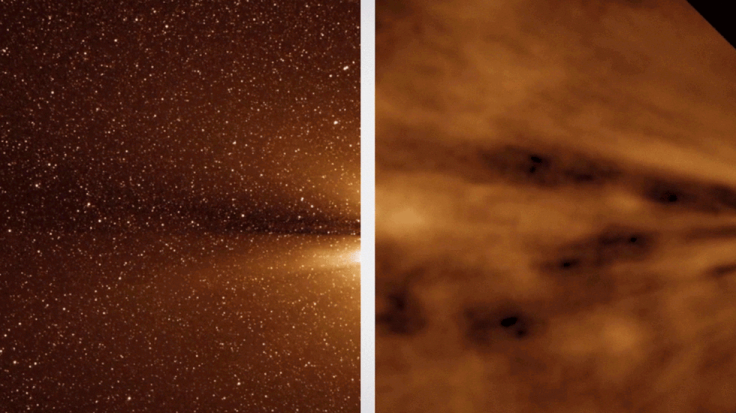NASA Images Reveal How Sun’s Corona Evolves Into Turbulent Solar Wind Stream

For the past six decades, scientists have been struggling to make sense of a perplexing phenomenon — how do the charged particles being emitted by the sun transition from the distinct and structured rays in the corona to turbulent outflows as they near Earth?
In order to understand this, scientists have, for the first time ever, imaged the edge of the sun to pinpoint where the transition takes place and where the solar wind — the continuous stream of charged particle that bathes the entire solar system — begins. The images, captured using NASA’s Solar Terrestrial Relations Observatory (STEREO), provide a macroscopic picture of how the solar wind forms and evolves.
“As you go farther from the sun, the magnetic field strength drops faster than the pressure of the material does,” Craig DeForest, lead author of a new study describing the findings and a solar physicist at the Southwest Research Institute in Boulder, Colorado, said in a statement. “Eventually, the material starts to act more like a gas, and less like a magnetically structured plasma.”
Even before these observations, scientists had hypothesized that the sun’s magnetic field was instrumental in shaping the edge of its corona. However, this is the first time the process has actually been observed, showing that much like how a jet of water shot out of a squirt gun eventually transitions to a fine, misty spray, the corona eventually transitions into a tenuous solar wind plasma roughly 20 million miles from the sun.
“In order to resolve the transition zone, scientists had to separate the faint features of the solar wind from the background noise and light sources over 100 times brighter: the background stars, stray light from the sun itself and even dust in the inner solar system,” NASA said in the statement. “Images of the corona fading into the solar wind are crucial pieces of the puzzle to understanding the whole sun, from its core to the edge of the heliosphere, the region of the sun’s vast influence. With a global perspective, scientists can better understand the large-scale physics at this critical region, which affect not only our planet, but also the entire solar system.”
© Copyright IBTimes 2024. All rights reserved.





















